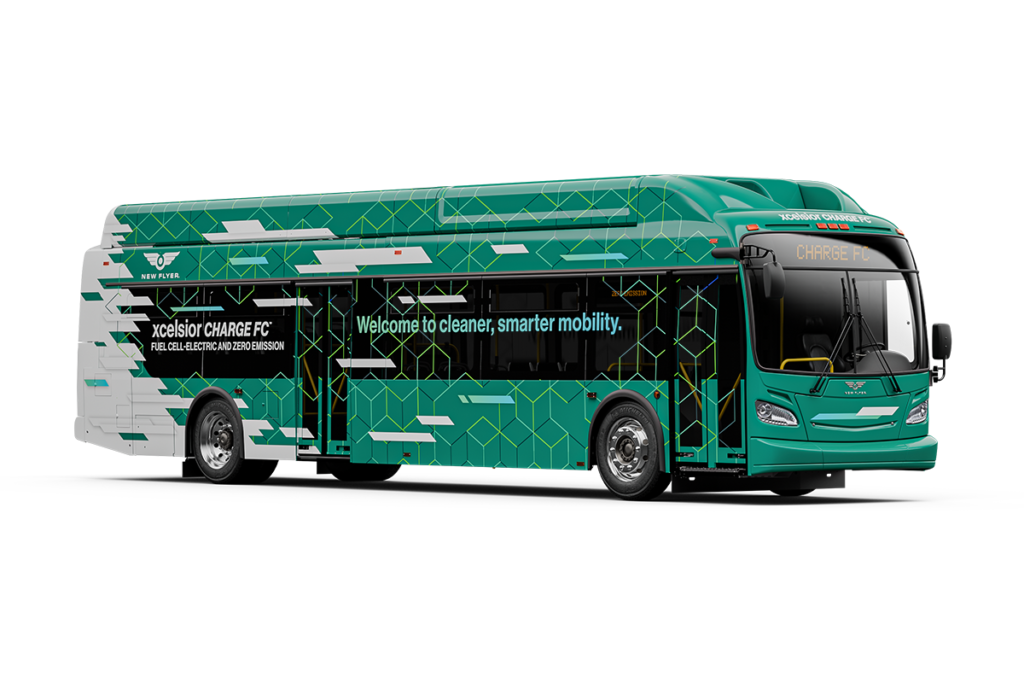In The News
Transit buses will power a first-of-its-kind vehicle-to-building resilience hub in California
Published by Mass Transit
The Mobility House, CTE, AC Transit, New Flyer, Schneider Electric will work on the V2B Oakland pilot, which will deploy electric transit buses as mobile emergency backup power for community centers.

A new pilot project in California will assess the use of electric buses as power sources for a resilience hub. The project, V2B Oakland, is funded by the California Energy Commission (CEC) and will demonstrate the value of bidirectional electric vehicle charging to support a first-of-its-kind vehicle-to-building (V2B) resilience hub.
This project will leverage stored energy from zero-emission electric buses, owned and operated by AC Transit, to provide filtered air conditioning at the West Oakland Branch of the Oakland Public Library for local residents in the event of unhealthy heat or smoke conditions. CEC’s Electric Program Investment Charge program awarded the project $3.2 million in funding, with combined $400,000 in matching funds contributed by West Oakland Environmental Indicators Project (WOEIP) and AC Transit. This pilot study will be executed by a project team consisting of the Center for Transportation and the Environment (CTE), The Mobility House, AC Transit, New Flyer, Schneider Electric, city of Oakland and WOEIP.
Each battery electric bus (BEB) will contribute six hours of backup power to the critical loads at the library and each hydrogen fuel cell-electric bus (FCEB) will provide up to 11 continuous hours of backup power, displacing nearly 100 pounds of carbon emissions per hour compared to traditional diesel backup generators. Working in close coordination with bus manufacturer New Flyer of America Inc. (New Flyer), a subsidiary of NFI Group Inc. (NFI), this project also marks the first time a U.S. transit agency will have the capability to use a hydrogen vehicle for V2B backup power.
“Initiating the first community resilience hub powered by a bidirectional V2B charging system has been an incredible journey. By bringing together leading-edge technological innovation and sustainability, we are able to offer much needed emergency response benefits for both transit agencies and communities,” said Jason Hanlin, director of Technology Research at CTE. “For a project with so many key players, we are excited to apply CTE’s proven project management approach to usher this novel project from concept to fruition.”
The resilient backup power system, which combines Bus Exportable Power Supply (BEPS) capability with bidirectional chargers and smart software, will be integrated and tested at NFI’s Hayward facility, then deployed at an AC Transit bus division and the Oakland Library. The system is designed to power the library’s upgraded HVAC and air filtration system, providing clean air and electricity inside the building to create a public shelter during emergencies and outages.
“We are thrilled to bring our ‘vehicle-to-everything’ expertise from numerous projects in Europe and Asia to now develop the first ever vehicle-to-building resilience hub in the U.S.,” said The Mobility House U.S. Managing Director Gregor Hintler. “Our ChargePilot system ensures all transit mobility needs are met and orchestrates the charge and discharge of the bidirectional chargers so that the buses can power critical building loads.”
“NFI is proud to work with AC Transit and our other partners on this exciting project that enables our vehicles to act as generators supporting resiliency and emergency preparedness. This platform, the first vehicle-to-everything fuel cell-electric bus in the world, will change the game for electric propulsion technology and will vastly expand the capabilities and utility of our mobility solutions,” said Paul Soubry, president and CEO, NFI.
Related
In The News
Large New York Order for New Flyer
Read More
In The News
NFI subsidiary New Flyer awarded two contracts from New York for up to 2,090 Xcelsior® transit buses
Read More
In The News
New Flyer sells +200 e-buses in New York (with options for further 1,200)
Read More